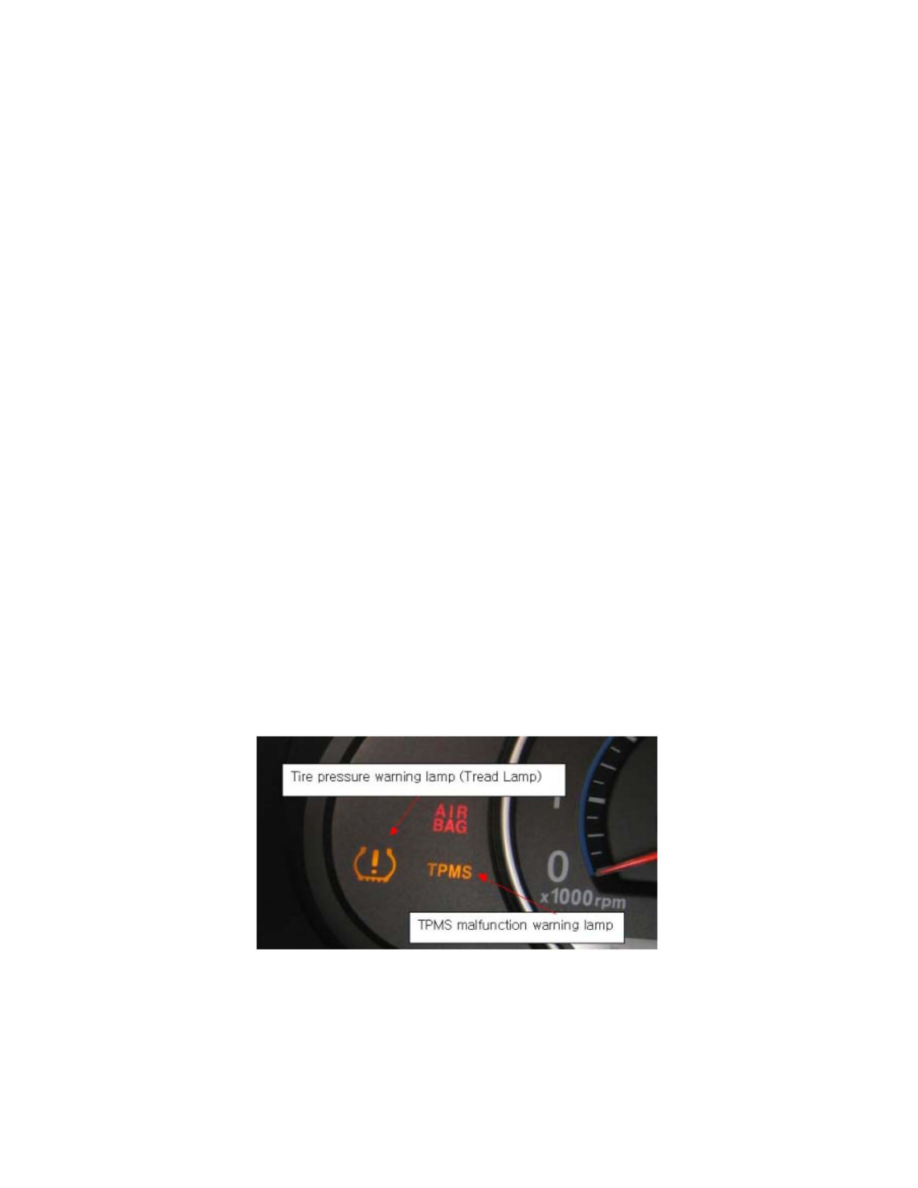Rondo L4-2.4L (2007)

Tire Pressure Sensor: Technical Service Bulletins
Tire Monitor System - TPMS Communication
Model Optima[MG], Rondo[UN]
Group Suspension System(21)
Number KT2006112101
Date Tuesday, November 21, 2006
Area N. America
Subject
Optima (MG) / Rondo (UN) TPMS Low Line Communication
- Description
The 2006.5 & 2007 Optima / Rondo models are equipped with a Tire Pressure Monitor System (TPMS), that utilizes the low line communication model.
The functionality for the driver is similar to the high line communication utilized on the 2006 Sedona, except when it comes to the driver's notification on
the instrument cluster. The low line communication system will not indicate which tire has exceeded the minimum tire pressure. The low line
communication model instead only prompts the illumination of the Tire Pressure Warning Tamp (Tread Lamp). This would then prompt the driver using
a properly calibrated pressure gauge to check all four (4) tire pressures against the drivers door jam tire placard (cold tire inflation values). The
illumination of the Tire Pressure Warning Lamp (Tread Lamp), will not store any Diagnostic Trouble Codes (DTC's) for an under inflated tire.
The TPMS system logic was designed to illuminate the Tire Pressure Warning Lamp (Tread Lamp), if the tire pressure range is twenty-five percent
(25%) below tire placard pressure with a tolerance of two (2) psi higher than the 25% value.
For Example: For Tire Placard = 30 psi, the 25% minimum value is 22.5 psi, the tire pressure warning lamp will illuminate between 22.5 ~24.5 psi.
Current Data communication with the TPMS Exciter Tool can take up to four (4) minutes to communicate with the individual sensors and correctly
display tire pressure / temperature. During the current data communication mode with the TPMS Exciter, the tire pressures will display zero (0) psi and
negative forty degrees (-40F) until the TPMS sensor broadcast is received, and the data field is populated with actual tire pressure and temperature on the
TPMS Exciter Screen. The current data communication function can also be utilized to check the accuracy of the tire inflation gauge against the current
data parameters for TPMS sensors.
If a sensor / hardware fault were to occur the TPMS malfunction warning lamp will be illuminated, prompting the retrieval of DTC's from the TPMS
module.
For additional information, refer to SST TSB 012 (Rondo), and SST TSB 010 (Optima (MG)).
